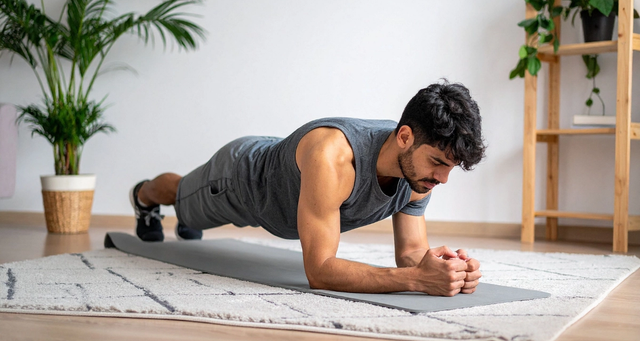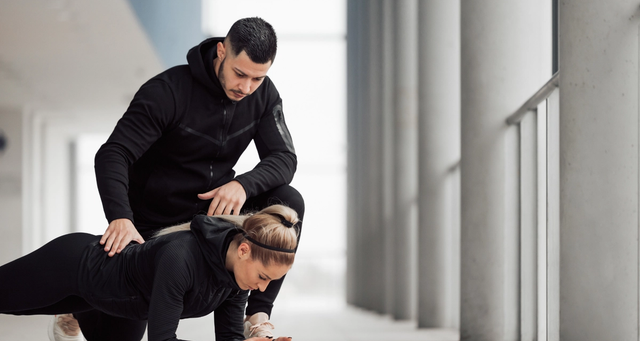
Best Glute Hypertrophy Training Program
Are you hoping to grow your glutes? This is often called glute hypertrophy, or the growth of muscles, which, in this case, are your glutes. It’s doable, especially with the right approach. Of course, you’ll need to know the basics of glute hypertrophy and moves that promote it. This way, you can build the best glute hypertrophy training program for your needs.
What is Glute Hypertrophy?
Before we explore glute hypertrophy training programs, it’s important to understand what hypertrophy is. Simply put, hypertrophy in exercise is muscle growth. In this case, it’s muscle growth in the glute muscles.
There are technically two types of muscle hypertrophy: sarcoplasmic and myofibril. When most people talk about hypertrophy, they’re referring to sarcoplasmic hypertrophy, which is muscle growth. However, it isn’t the only type. Myofibril hypertrophy in exercise is when a muscle becomes more dense and compact.
Oftentimes, glute hypertrophy training programs (sarcoplasmic) focus on moderate weight and moderate repetitions. They use resistance training and specific techniques to hone in on those muscles and increase muscle size, tone, and mass.
8 Excellent Glute Hypertrophy Exercises for a Well-Rounded Training Program
A top-notch glute hypertrophy training program shouldn’t focus solely on the glutes. Instead, it should include a few excellent glute exercises in addition to other lower body exercises that target different muscles.
Here are a few of the best exercises for glute hypertrophy:
1. Barbell Squat
The barbell squat is a great compound exercise that focuses on multiple muscle groups. It targets the quads, hamstrings, lower back, and glutes, so it’s a solid addition to your glute hypertrophy training regime.
With the proper form, squats can be glute dominant, turning up the heat in your glute muscles to help you with your glute hypertrophy goals. Much of the engagement is at the bottom of each rep when the glute muscles are in a stretch position. As you push through your heels and power back up to the top, your glutes contract, helping you return to the starting position.
2. Hip Thrust
The hip thrust is a killer move for glute engagement. It focuses specifically on the gluteus maximus, the largest and heftiest muscle of the body. As your hips dip in the movement, your glutes stretch, and when you squeeze to thrust your hips upward, your glutes contract, initiating a hurt-so-good burn in your muscles.
If done correctly, you’ll feel the fire light in your glute muscles without needing to excessively involve your quads. As you progress, you can continue adding weight, using dumbbells, a bar, or a hip thrust machine to hone in on your glutes.
3. Bulgarian Split Squat
While many of us would rather leave the Bulgarian split squat out of the glute equation (this move is intense), it’s an outstanding addition to your training program. The split squat is a unilateral exercise that targets the glutes, quads, and hamstrings, activating those muscles while forcing you to balance and coordinate your movements.
The setup of the squat allows you to achieve a deeper range of motion than you could in a regular ‘ol lunge setup, which enhances glute activation. Plus, since you work each side of your body independently, you don’t have to worry about imbalance development (but you’ll have to do each set twice–once for each leg).
4. Curtsy Lunge
The curtsy lunge is good for the gluteus medius and gluteus minimus, which are responsible for the shape of your booty and promote hip stability. While it’s quad-dominant, the curtsy lunge also works the quads and inner thighs.
In this move, you’ll emphasize the lateral movement of your glute muscles (often forgotten and neglected in traditional glute exercises). It’s a good way to shape and strengthen the sides of your glutes, helping you build well-rounded glutes.

5. Glute Bridge
The glute bridge is a similar move to the hip thrust—it targets the glutes and hamstring, but without the same range of motion and often less weight. It’s an excellent way to target the glutes without over-stressing the lower back.
As you push through your heels to raise your hips toward the sky, your glutes and hamstrings engage, allowing you to achieve an excellent burn in those muscles. If you don’t feel the burn, add a bit of weight to your hips and give it another go (with the correct form, of course!).
6. Banded Side Step
The banded side step steers the focus to the gluteus medius and minimus, activating the hip abductor as an accessory muscle. It’s an excellent move for improving hip and knee stability, but we’ve added it to the list for its glute-targeting abilities.
With this move, you can engage those smaller glute muscles, initiating a solid burn in those areas. It’s the perfect warm-up move or a killer burnout after a tiring leg and booty workout.
7. Frog Bridge
The frog bridge shifts the focus back to the gluteus maximus while also engaging the hip abductors. Unlike many of the moves on this list, it doesn’t demand too much from the hamstrings or quads—instead, it primarily isolates the glutes.
The movement requires you to externally rotate your hips, which allows you to isolate the glutes and improve their engagement.
8. Romanian Deadlift
The Romanian deadlift (RDL) is phenomenal for the glutes, hamstrings, and lower back. While it’s great for booty gains, it’s also good for improving posterior chain strength and hip hinge mechanics, making it a good addition to your lineup.
It stretches the hamstrings and glutes at the bottom of the movement, promoting muscle hypertrophy while also improving overall hip and hamstring flexibility and strength (essential for all sorts of lower-body exercises).
How to Create a Killer Hypertrophy Training Program to Achieve Your Glute Goals
Creating a glute hypertrophy training program that will help you achieve your glute goals requires careful consideration of a few factors. First and foremost, it’s important to incorporate muscles that work different parts of the glutes. Add compound exercises that target the various muscles in the glutes.
In the beginning, start with lighter weight and moderate rep counts. However, as you get stronger and begin building muscle, you’ll need to up the ante to keep your progress going. Gradually turn up the heat by increasing the weight, sets, or reps over time. This will help continue building muscle, honing in on growth and adaptation. Remember, you have to challenge your muscles to improve and stimulate hypertrophy, so don’t coast through it all.
And, as always, you can’t achieve your fitness goals without plenty of rest and water and a healthy diet. Consume plenty of protein to ensure your muscles can do the growing you want them to and remember to drink plenty of water to keep your body hydrated and ready to go. Don’t skip your rest days (even though you might be tempted to)— these are essential for recovery and muscle growth.
If the prospect of putting all the pieces together sounds overwhelming, that’s okay! Chat with a certified personal trainer in your area. They can help you iron out the details and craft a glute hypertrophy training program to help you achieve the booty of your dreams.
Frequently Asked Questions
How Many Glute Exercises Should I Do Per Workout?
Ideally, you should include one or two glute exercises for hypertrophy in a single session. You might add two to five glute exercises throughout your week, training glutes two to three times throughout your weekly fitness regime.
How Often Should I Train Glutes for Growth?
Like any other muscle group, you’ll need to train your glutes enough for growth but not too much that the muscles don’t have time to recover. For most, the optimal number of training sessions for glute growth is two to three times per week.
How Many Sets and Reps for Glute Growth?
The number of sets and reps you should do for glute growth varies—each can offer different glute-growing benefits. Generally, the ideal range is 8-12 reps per set for a total of three sets, but you can mix it up based on what works for you.
Start your Svetness journey today
Get a free consultation and see how our trainers can transform your wellness journey.





